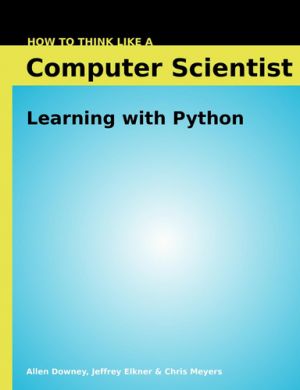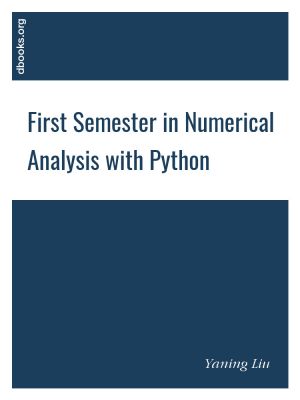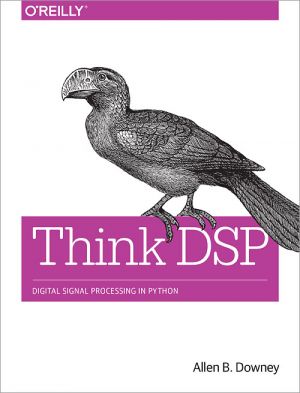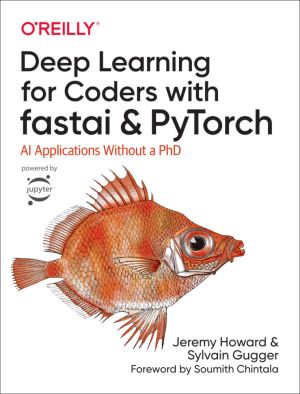
Around the world, organizations are facing the challenge of becoming more efficient by increasing productivity with their existing resources - or sometimes even less. Robotic process automation (RPA) is a technology that can augment the productivity of human workers by liberating them from tedious and repetitive tasks that can be performed faster a...

This book is aimed at readers who are interested in software development but have very little to no prior experience. The book focuses on teaching the core principles around software development. It uses several technologies to this goal (e.g. C, Python, JavaScript, HTML, etc.) but is not a book about the technologies themselves. The reader will le...

Matplotlib is a plotting library for Python. It provides object-oriented APIs for embedding plots into applications. It is similar to MATLAB in capacity and syntax.
It is an unofficial and free Python Matplotlib book created for educational purposes. All the content is extracted from Stack Overflow Documentation, which is written by many hardwor...

By taking you through the development of a real web application from beginning to end, this hands-on guide demonstrates the practical advantages of test-driven development (TDD) with Python. You'll learn how to write and run tests before building each part of your app, and then develop the minimum amount of code required to pass those tests. T...

Learn and use Python and PyGame to design and build cool arcade games. In Program Arcade Games: With Python and PyGame, 4th Edition, Dr. Paul Vincent Craven teaches you how to create fun and simple quiz games; integrate and start using graphics; animate graphics; integrate and use game controllers; add sound and bit-mapped graphics; and build grid-...

Professional developers know the many benefits of writing application code that's clean, well-organized, and easy to maintain. By learning and following established patterns and best practices, you can take your code and your career to a new level.
With Practices of the Python Pro, you'll learn to design professional-level, clean, easi...

This book started out as about 30 pages of notes for students in my introductory programming class at Mount St. Mary's University. Most of these students have no prior programming experience, and that has affected my approach. I leave out a lot of technical details and sometimes I oversimplify things. Some of these details are filled in later ...

Fully updated for Raspberry Pi 400, Raspberry Pi 4, and the latest software, this 252-page official Raspberry Pi book is crammed with projects and beginner's guides containing all the information you need to get started using your new computer!
Learn how to set up your Raspberry Pi, install an operating system, and start using it. Follow st...

How to Think Like a Computer Scientist: Learning with Python - is an introduction to computer science using the Python programming language. It covers the basics of computer programming, including variables and values, functions, conditionals and control flow, program development and debugging. Later chapters cover basic algorithms and data structu...

The book is based on "First semester in Numerical Analysis with Julia". The contents of the original book are retained, while all the algorithms are implemented in Python (Version 3.8.0). Python is an open source (under OSI), interpreted, general-purpose programming language that has a large number of users around the world. Python is ran...

Developing Graphics Frameworks with Python and OpenGL shows you how to create software for rendering complete three-dimensional scenes. The authors explain the foundational theoretical concepts as well as the practical programming techniques that will enable you to create your own animated and interactive computer-generated worlds. You will learn h...

As Python continues to grow in popularity, projects are becoming larger and more complex. Many Python developers are taking an interest in high-level software design patterns such as hexagonal/clean architecture, event-driven architecture, and the strategic patterns prescribed by domain-driven design (DDD). But translating those patterns into Pytho...

This easy-to-read book introduces the basics of solving partial differential equations by means of finite difference methods. Unlike many of the traditional academic works on the topic, this book was written for practitioners. Accordingly, it especially addresses: the construction of finite difference schemes, formulation and implementation of algo...

This text provides a very simple, initial introduction to the complete scientific computing pipeline: models, discretization, algorithms, programming, verification, and visualization. The pedagogical strategy is to use one case study – an ordinary differential equation describing exponential decay processes – to illustrate fundamental concepts ...

If you know how to program with Python and also know a little about probability, you're ready to tackle Bayesian statistics. With this book, you'll learn how to solve statistical problems with Python code instead of mathematical notation, and use discrete probability distributions instead of continuous mathematics. Once you get the math o...

If you understand basic mathematics and know how to program with Python, you're ready to dive into signal processing. While most resources start with theory to teach this complex subject, this practical book introduces techniques by showing you how they're applied in the real world. In the first chapter alone, you'll be able to decom...

This Open Access textbook provides students and researchers in the life sciences with essential practical information on how to quantitatively analyze data images. It refrains from focusing on theory, and instead uses practical examples and step-by step protocols to familiarize readers with the most commonly used image processing and analysis platf...

The Little Book of Semaphores is a free textbook that introduces the principles of synchronization for concurrent programming.
In most computer science curricula, synchronization is a module in an Operating Systems class. OS textbooks present a standard set of problems with a standard set of solutions, but most students don't get a good und...

Take pictures and shoot video with your Raspberry Pi. Connecting a High Quality Camera or Camera Module turns your favourite credit-card-sized computer into a powerful digital camera. Learn how to set up and control the camera to capture stills and video footage. Discover the numerous modes and effects available, and use the camera in a variety of ...

This open book shows you how to set up a Raspberry Pi to play classic games, and a whole lot more. Build your own portable console, full-size arcade cabinet, and pinball machine with our step-by-step guides. And learn how to program your own games, using Python and Pygame Zero.
- Set up your Raspberry Pi for retro gaming
- Emulate classic computers...

This book shall provide you a walk through the different aspect of application development using Qt version 5.x. It focuses on the new Qt Quick technology but also provides necessary information of writing C++ back-ends and extension for Qt Quick....

This text is a practical guide for linguists, and programmers, who work with data in multilingual computational environments. We introduce the basic concepts needed to understand how writing systems and character encodings function, and how they work together at the intersection between the Unicode Standard and the International Phonetic Alphabet. ...

Vim is a console-based multi-mode (modal) text editor. It is widely used and available by default on all Unix, Linux, and Apple OS X systems. Vim has a large active community and a wide user base. The editor supports all popular programming languages, and many plugins are available to extend its features.
It is an unofficial and free Vim book cr...

Did fake Twitter accounts help sway a presidential election? What can Facebook and Reddit archives tell us about human behavior? In Mining Social Media, senior BuzzFeed reporter Lam Thuy Vo shows you how to use Python and key data analysis tools to find the stories buried in social media.
Whether you're a professional journalist, an academi...

Python is one of the leading open source platforms for data science and numerical computing. IPython and the associated Jupyter Notebook offer efficient interfaces to Python for data analysis and interactive visualization, and they constitute an ideal gateway to the platform.
IPython Interactive Computing and Visualization Cookbook, 2nd Edition ...

Inventory Analytics provides a comprehensive and accessible introduction to the theory and practice of inventory control - a significant research area central to supply chain planning. The book outlines the foundations of inventory systems and surveys prescriptive analytics models for deterministic inventory control. It further discusses predictive...

This stunning 224-page hardback book not only tells the stories of some of the seminal video games of the 1970s and 1980s, but shows you how to create your own games inspired by them using Python and Pygame Zero, following examples programmed by Raspberry Pi founder Eben Upton.
In the first of two volumes, we remake five classic video games - ra...

Ansible is an open-source software, automation engine, and automation language mainly used in software configuration management, infrastructure provisioning, configuration management, application deployment, and orchestration. The core Ansible is written in Python and can be used on Unix-like machines or Microsoft Windows. In Ansible Succinctly, Zo...

Discover how to set up Raspberry Pi to play classic games in the brand new version of our retro gaming guide. In this 164-page book, you'll learn how to build a portable games machine, assemble a full-sized arcade cabinet, and emulate classic computers and consoles. Our step-by-step guides make each build easy! Plus you'll even learn to p...

Deep learning is often viewed as the exclusive domain of math PhDs and big tech companies. But as this hands-on guide demonstrates, programmers comfortable with Python can achieve impressive results in deep learning with little math background, small amounts of data, and minimal code. How? With fastai, the first library to provide a consistent inte...

The book serves both as a reference for
various scaled models with corresponding dimensionless numbers, and as a
resource for learning the art of scaling.
A special feature of the book is the emphasis on how to create software
for scaled models, based on existing software for unscaled models.
Scaling (or non-dimensionalization) is a
mathematical...

This book presents computer programming as a key method for solving mathematical problems. There are two versions of the book, one for MATLAB and one for Python. The book was inspired by the Springer book TCSE 6: A Primer on Scientific Programming with Python (by Langtangen), but the style is more accessible and concise, in keeping with the needs o...
